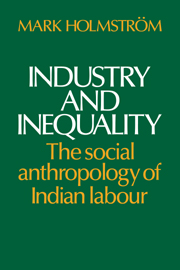6 - Who are the ‘working class’?
Published online by Cambridge University Press: 05 February 2012
Summary
People commonly refer to industrial workers, and sometimes other kinds of wage-earners and self-employed workers, as the ‘working class’. Usually this means a group who share a similar economic situation, which distinguishes them from others, like propertyowners, employers and managers. It suggests common interests and a shared consciousness of these interests. When left-wing people (not just marxists) use the term, it implies that the working class work not for themselves, but for those who control the means of production and live off other people's labour.
Alternatively one could argue that it is misleading to lump together, as ‘working class’, people who share few interests and are not conscious of any; and that there is an important class line to draw between organized and unorganized sector industrial workers (Joshi 1976a, see p. 17 above), or between an urban class, which includes all industrial workers, and the mass of rural poor (Lipton 1977, see p. 19 above). In either case, well-paid organized sector workers are allied with the privileged or exploiting class, though the sections of this class fight among themselves for the spoils. That is what trade unions are for.
Are organized and unorganized sector industrial workers two classes with different or conflicting interests? On the face of it they seem to be, and I half implied that they were in South Indian factory workers (Holmström 1976): those inside the citadel of permanent employment, together with their close relatives; and those outside trying to get in, with little chance of success.
- Type
- Chapter
- Information
- Industry and InequalityThe Social Anthropology of Indian Labour, pp. 248 - 309Publisher: Cambridge University PressPrint publication year: 1984

